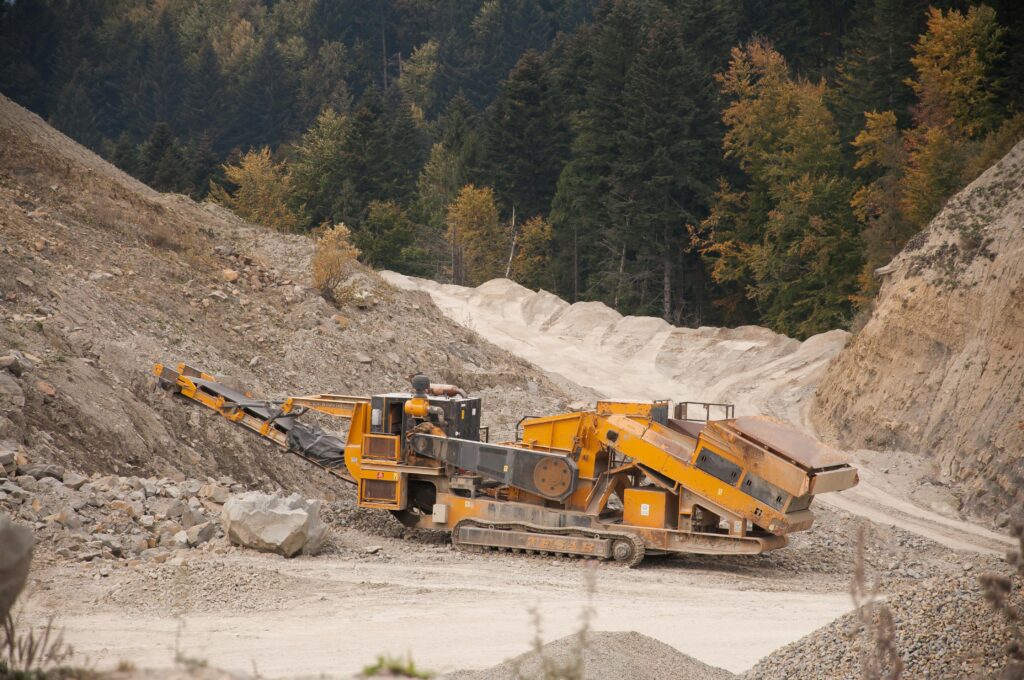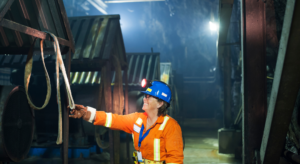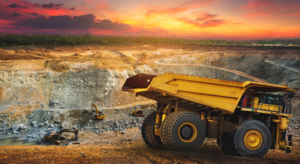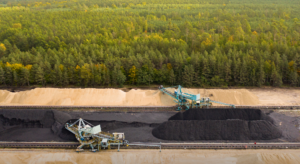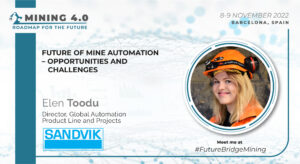Tailings storage facilities (TSFs) are an essential part of mining operations. It provides safe storage for the waste material generated during mineral processing. However, tailings dam failures can be catastrophic. It can result in loss of life and extensive environmental damage. It can also lead to severe financial and reputational impacts for mining companies. Recent high-profile failures like those at Brumadinho and Mariana in Brazil have highlighted the risks associated with conventional tailings management approaches.
In response, the mining industry is increasingly looking to technology, automation, and advanced data analytics. This is to enable smarter, safer tailings management. Three-dimensional (3D) digital modeling of tailings facilities is one innovative approach. It offers significant potential to improve how these risky structures are designed, monitored, and managed. So, let us look in depth at the role of 3D Modeling for smart tailings management.
The Risks and Challenges of Tailings Storage
Tailings dams rank among the largest engineered structures in the world. It often exceeds heights of 100 meters. They are also unique infrastructure assets due to their construction method. Tailings dams raise their walls incrementally using the waste product they contain. It is unlike conventional dams that are built at once. This process involves constructing the walls on top of soft tailings slurry. As a result, it necessitates constant monitoring and maintenance.
However, tailings dams do fail despite the best efforts of miners and engineers. Their immense size, continuous modification, and construction on weak foundations combine to make these structures vulnerable to stability issues. Seepage, slope failure, and overtopping from floods and earthquakes represent major risks. Moreover, dam failures unleash millions of tons of toxic tailings downstream, devastating communities and ecosystems.
These characteristics make effective design, monitoring, and management of tailings facilities an extremely complex challenge. Tailings dams have uncertain geotechnical conditions due to construction on tailings slurry. Furthermore, they face unique seismic risks from the immense dam heights and soft foundations. So, the staged raising approach requires constant modifications to the structures. Remote locations also mean limited access to inspection and interventions. Additionally, the massive scale of these dams requires the coordination of sensor networks consisting of thousands of monitoring points. Tailings facilities often remain active for over 50 years. It necessitates vigilant management across decades of operation.
While there are established best practices around tailings dam safety, miners are still struggling. This is related to reliably assessing and mitigating risks using conventional tools. So, new approaches and technologies are essential to drive step-change improvements in tailings management.
Unlocking the Potential of 3D Modeling
Three-dimensional digital modeling provides a powerful platform for advancing tailings dam safety and sustainability. High-resolution 3D representations of TSF topology and infrastructure allow for advanced analysis, visualization, and integration of data from various sources.
Whereas traditional records consist of separate 2D maps, drawings, and technical reports, 3D models enable the consolidation of all relevant data into a single digital twin of the facility. This unlocks more holistic, precise, and rapid insights. These inform real-time decision-making across the mine life cycle, including:
Enhanced design and planning
With 3D environments, engineers can visualize and optimize site layouts, staging, and infrastructure like decant towers. Various staging alternatives and ‘what if’ failure scenarios can undergo ready simulation for assessing risks and impacts. Erosion control and stabilization measures can also undergo design and evaluation in the virtual environment. Monitoring sensor locations and future dam-raising increments can likewise be planned using the 3D model.
Improved stability assessments
High-resolution 3D topography incorporated from aerial surveys and Lidar scans, combined with mapped geotechnical properties, allows for far more advanced quantitative assessments of slope stability. Any weak zones and high-risk areas prone to failure can be identified. Seepage and pore pressure analysis can also be conducted. The impacts of potential mitigations like buttressing on stability factors can be modeled as well.
Effective monitoring networks
Optimized sensor network designs tailored to each facility’s unique topology and risks can be developed using 3D environments. Visualizing model data helps identify coverage gaps or redundant monitoring areas. Risk-based placements also improve early warning capabilities by tracking key failure pathways.
Enhanced reporting and insights
Interactive 3D visualizations and flythroughs provide unambiguous representations of tailings dam conditions, risks, and changes over time. This greatly enhances understanding compared to traditional 2D deliverables. The consolidated models also improve the efficiency and accuracy of reporting. This goes for both internal and external stakeholders like regulators.
Emergency Preparedness
In the event of an emergency like a dam breach, responders can access 3D models. This is through tablets and mobile devices to instantly coordinate actions. Modeling of downstream flooding provides insights into where to focus evacuations and remedial efforts. Access to digital twins aids forensic analysis of failure causes as well.
Closure planning
Detailed 3D topography and infrastructure models allow for precise simulations of rehabilitation strategies and outcomes during remediation. Volumetric analysis for erosion control and cover systems is enhanced. Models provide stakeholders with the visual tools to demonstrate long-term closure and landscape objectives.
By bridging gaps between design, planning, monitoring, analysis, and on-the-ground management, integrated 3D models support better-informed, rapid decisions. These enhance tailings safety throughout the mine life cycle.
3D Modeling: Real-World Applications and Benefits
While 3D Modeling technology has existed for years, adoption has been relatively slow. However, recent advances in data collection, analytics, and computing power are unlocking more value from virtual modeling environments. Leading miners are piloting applications to transform legacy tailings management approaches, including:
Boliden
At the Aitik copper mine in northern Sweden, Boliden has implemented 3D Modeling. It helps to improve tailings dam safety and achieve steeper beach slopes. The models integrate drone surveys, exploration data, and geotechnical information. This has enhanced Boliden’s ability to analyze and visualize stability risks, enabling targeted interventions to stabilize the dam walls and avoid failures.
Gold Fields
At the Damang gold mine in Ghana, Gold Fields is leveraging 3D Modeling of the tailings storage facility. They aim to optimize monitoring sensor layouts. By identifying high-risk areas and modeling potential failure pathways, they have developed an improved early warning system. This provides the data needed to assess and respond to risks in near real time.
Teck Resources
At the Highland Valley copper mine in Canada, Teck Resources has adopted 3D tailings models. This is to support remediation efforts. Detailed topographic surveys and geotechnical data feed into simulations of rehabilitation alternatives for unstable embankments. This guides cost-effective planning to stabilize and reclaim sections of the dams no longer in use.
3D Modeling addresses the most pressing safety, environmental, and operational risks in these cases, highlighting their usage, including:
Improved Stability Analysis
Integrating surveyed topography with geotechnical data enables advanced quantitative assessments. It is regarding slope stability to identify and address weak zones proactively. So, models make it faster and easier to simulate the impacts of mitigations like buttressing as well.
Optimized Monitoring Design
Tailoring sensor networks can create coverage for high-risk areas and reveal potential failure pathways during breach simulations. This significantly improves monitoring accuracy and early warning capabilities.
Predictive Risk Analytics
Linking real-time sensor data to 3D Modeling allows for sophisticated predictive analytics using AI. Sudden changes in readings can trigger alerts, while longer-term trends may indicate emerging issues.
Accelerated Decision Making
Consolidated, up-to-date visual models combined with predictive insights allow for rapid, informed evaluation of events and risks. Analysts can immediately assess situations and model options.
Enhanced Communication
Interactive 3D visualizations and VR simulations greatly improve risk understanding and training for both internal and external stakeholders. Models provide unambiguous representations of conditions.
Coordinated Emergency Response
In the event of an emergency like a breach, responders can instantly access 3D models on tablets to coordinate actions, assess downstream impacts, and guide evacuations.
Optimized Closure Designs
Detailed 3D environments allow engineers to simulate rehabilitation strategies with precision. Models provide the data needed to accurately estimate costs and material requirements.
The transformational potential of 3D tailings modeling is clear. It also answers the pressing question of why is tailing management important. When implemented effectively, these technologies can provide the comprehensive digital visibility required to make tailings facilities genuinely safer, more sustainable, and more productive assets.
Overcoming Adoption Challenges
Barriers are inhibiting the broader adoption of 3D tailings models across the mining industry. Transitioning from outdated legacy practices remains difficult, while technical complexity and upfront costs give pause to mines with tight budgets and schedules. Apart from why is tailing management important, let us look at its challenges:
Legacy Processes and Mindsets
Most tailings facilities still rely on management processes and technical approaches developed decades ago. Shifting to new digital platforms represents a major change. Senior engineers may lack familiarity with 3D Modeling capabilities and techniques. Additionally, organizational inertia and “this is how we’ve always done it” mentalities can slow the adoption of new methods.
Data Integration Difficulties
To maximize value, 3D models require the integration of disparate datasets like topography, geotechnical data, drawings, imagery, and sensor readings. Interfacing with various formats across different systems poses challenges. Much of the data required may not exist as well.
Resource Limitations
Developing and maintaining 3D tailings models requires specialized expertise in geospatial data, programming, geotechnical engineering, and data science. Smaller mines may lack qualified staff and struggle to recruit talent. Outsourcing adds cost.
Upfront Costs
While long-term benefits are substantial, developing integrated 3D environments does require significant initial investment. Budget constraints may delay adoption, even if models offer clear value.
To Sum Up
The mining industry is making advances in sustainability and adopting new technologies. 3D Modeling has started to play a great role when it comes to legacy tailing management approaches. However, change is not bound to happen suddenly. Though progressive miners pilot the 3D Modeling apps, widespread implementation requires multiple elements. These include innovation, knowledge sharing, and collaboration across industries.
The upcoming 5th Mining 4.0: North America 2024 Summit scheduled for April 10-11, 2024, in Toronto, Canada, offers a great platform. It aims to speed up the integration of advanced technologies, such as 3D Modeling/ 3D tailing modeling. With the participation of more than 100 mining companies and technology providers, Mining 4.0 serves as a valuable space for sharing practical experiences and valuable insights. The presentations at the conference highlight emerging applications and solutions specifically designed for the mining industry. Don’t miss out on this opportunity and register now!

